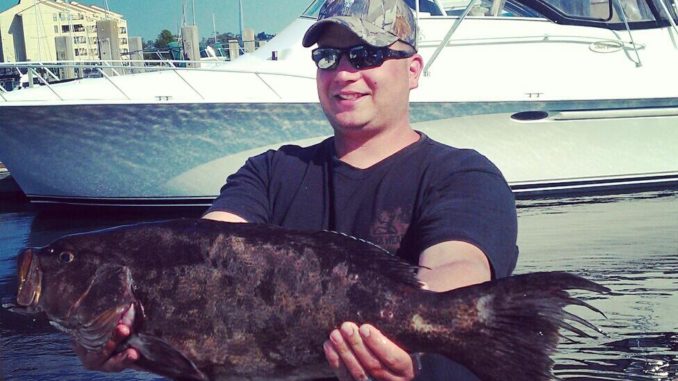
Grouper hitting jigs around offshore reefs; black sea bass ganged up on nearshore reefs
Falling water temperatures are is making for a perfect scenario in both nearshore and offshore waters off the Grand Strand for bottom-fishing.
With just three weeks before grouper season closes, the better-than-usual fishing is making the offshore journey well worth the trip. From black sea bass flooding nearshore wrecks to the vermilion snapper and grouper pigging out a little further out to sea, the last few weeks of 2013 are brewing the perfect storm for the bottom-fishing angler.
Capt. David Cutler of Lowcountry Fishing Charters out of Little River is putting in as much offshore time as possible this month.
“The bottom-fishing is great right now. Get it before the end of the year when the grouper season closes,” said Cutler (843-222-7433). “The grouper have really gotten good because of the migrations and separation of black sea bass to the nearshore wrecks.”
Each year, black sea bass migrate towards the nearshore wrecks, leaving offshore structure to the grouper, snapper and the other offshore bottom-dwelling species. Cutler is finding the best grouper bite in 120 feet of water and the black sea bass bite in 70 feet and shallower.
“You can actually get the bait down to the grouper with the black sea bass gone into the shallows,” he said. “Any kind of live bait works the best if you can get it, but dead cigar minnows and freestyle jigs are very effective.”
Depending on the speed of the current, Cutler uses 4- to 7-ounce jigs such as Blue Water Candy’s Roscoe jigs, which resembles the squid that grouper and vermilion snapper just cannot resist. But cut or live bait on a standard grouper rig with six to eight ounces of weight and a 6/0 circle hook is a no-brainer and will not last long when it hits the bottom along the livebottom structure.
For grouper and vermillion snapper, Cutler prefers to fish offshore ledges with livebottom.
“Stay away from wrecks and artificial reefs, because the amberjacks will take away anything you put down there,” he said.
For the anglers preferring to stay closer to home, the black sea bass will be thick around the nearshore artificial reefs and wrecks. Cutler is catching some of the largest black sea bass of the year, with several fish over four pounds making it into the fish box. They are hitting about anything; natural bait and just about any artificial lure making it into the strike zone along the ocean floor will get one of these fish on the hook in a matter of seconds.



